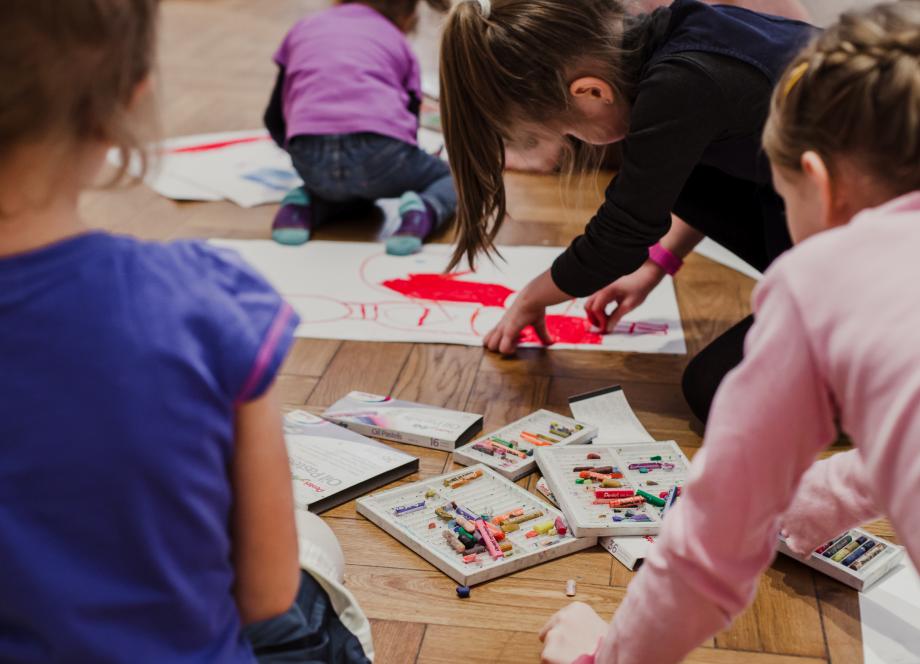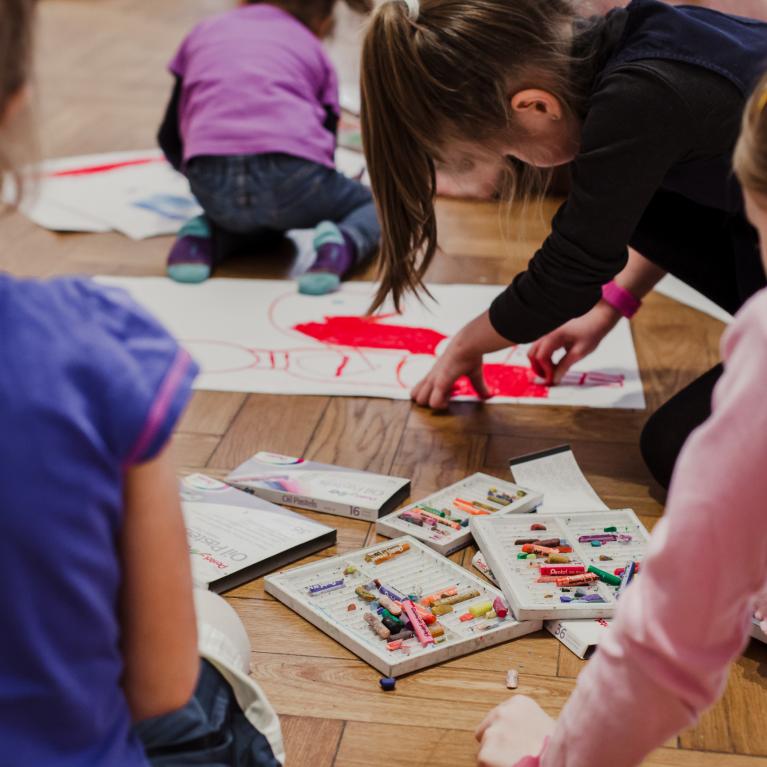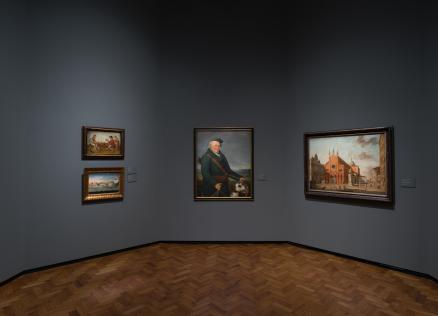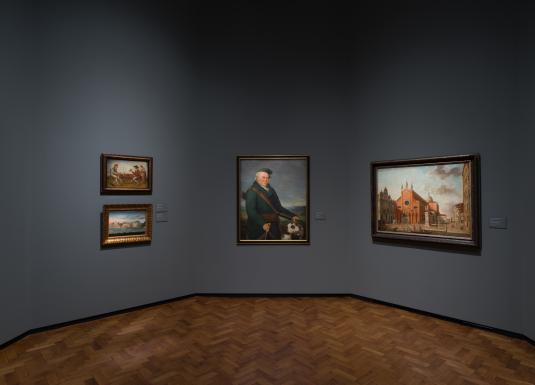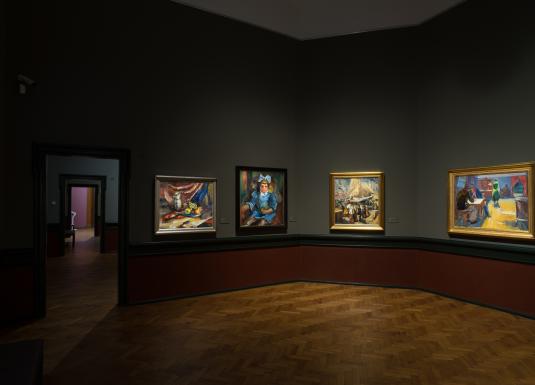Activity for School Students:
Learn the Language of Art!
The museum's exhibition of classical art (19th century – mid-20th century) presents a variety of themes and diversity of artistic language which has changed over the course of time. Nevertheless, several basic categories have remained. This activity in the permanent exhibition will foster a better understanding of the basic principles that underpin the work of our old masters as well as modernists.
For the activity we offer six broad themes and subthemes which are relevant for art education and permissive of creative interpretation. We invite the class to choose one theme per museum visit according to interests and its relevance to the curriculum.
Colour in Art and Tonal Painting
The activity encourages participants to recognise and apply colour nuances and become familiar with old master paintings by studying their colour palette and tonal gradations. Students will acquire knowledge about colour scale, structure and the methods of achieving the required colour nuance.
Creative assignment: make a copy of a painting of choice depicting colour gradients and tonal nuances.
Colour in Art and Emotions
The activity discusses the role of colour in the depiction of the work's emotional content through the study of the works of the Latvian modernists. Students will learn about the artists' use of bright and intense colours to achieve emotional effects, such as joy, sadness or fear. The educator will also talk about compositional principles consciously devised by the artists and their effect on the sensations produced by paintings.
Creative assignment: create a composition about the world of your emotions through colour.
The Line in Art
The activity is devoted to graphic art through studying its basic means of expression – the line. The activity introduces the effect generated by the line in paintings and graphic compositions. Students will learn about the diversity of applications of lines in the works of such notable Latvian graphic artists as Rihards Zariņš, Teodorš Ūders and Romans Suta.
Creative assignment: make an interpretation of a painting using only line.
Landscape in Art and Spatiality
The activity introduces the main expressive means in the genre of landscape –linear and aerial perspective and plein-air lighting. This type of landscape relies on a depiction that approaches visual reality, achieving the illusion of a spatial motif on a plane. Students will explore these relationships by studying panoramic landscapes created by Latvian artists and the harmony in their combinations of line, form, light and shade.
Creative assignment: make a copy of a painting that uses the effect of space.
Landscape in Art and Subject Matter
This activity involves learning about the genre of the landscape, by studying the artist's subjective motivations for their subject matter. In depicting a landscape, artists create their own interpretation of the motif, expressing specific emotions or a personal perspective on their visual experience. For this purpose, they may consciously alter the forms or colours of objects. Students will study the basic principles of the landscape genre in the works of Latvian artists, comparing and analysing their various manifestations.
Creative assignment: make a copy of a painting that employs the specified principle of landscape composition.
Portrait in Art
This activity introduces the compositional means that artists employ in the genre of portrait to achieve their desired effect – the sitter's pose, look, colour, visual deformations. Students will learn how, depending on the artist's intention, the portrait is often created with a specific motivation regarding the characteristics of the sitter or content. Students will see the most notable portraits in Latvian art, studying examples created by old masters Jānis Staņislavs Roze and Janis Rozentāls as well as works of Latvian modernists Jāzeps Grosvalds, Jēkabs Kazaks and Valdemārs Tone.
Creative assignment: make a self-portrait employing the specified methods in representing the personality.

Additional Information
- Maximum number of participants in the group — 30.
- Information about admission fees is available here.
- It is recommended to arrive at the museum around 15-20 minutes before the beginning of the activity to allow time for the services of the ticket office and cloakroom.
- Before the activity the museum pedagogue will meet participants in the 2nd floor vestibule.
- This activity is accessible for people with reduced mobility. Practical information about the museum's accessibility can be found here.
- The activity can be adapted for students from special schools as well as students with lower language proficiency by adapting the language difficulty level. In the above cases please confirm and discuss the course of the activity with museum staff.
